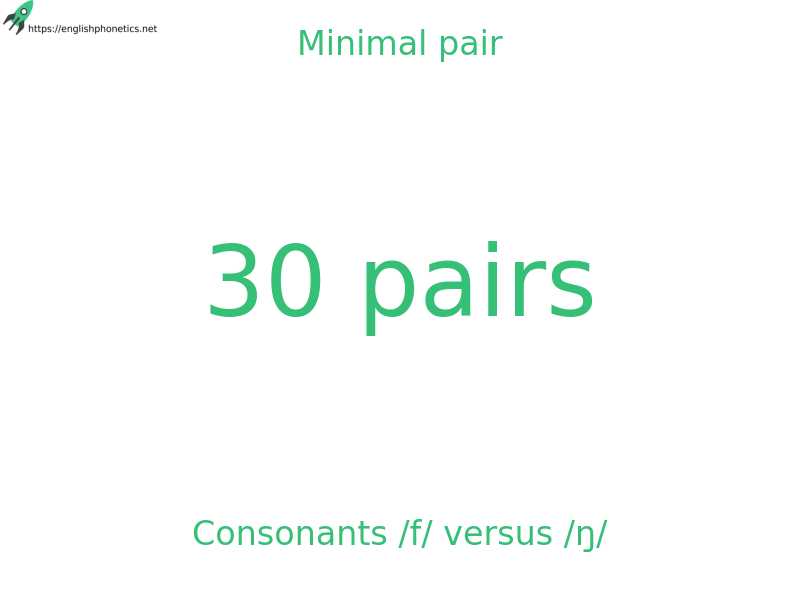Minimal Pair List Consonants /f/ versus /ŋ/, 30 pairs

The /f/ sound is spelled with <ff> or <gh> as in
rough
. The /ŋ/ sound is spelled <ng> or <ngue> in
tongue
.
The contrast is between a voiceless labio-dental fricative and a voiced velar nasal continuant, and only ocurs in medial or final positions. It is not a problem.
The mean density value is 0.3%. The list makes 21 semantic distinctions, a loading of 70%.
bailiff bailing
bailiff baling
buff bung
buffing bunging
buffs bungs
buffed bunged
Cardiff carding
cliff cling
cliffs clings
fluff flung
gaff gang
gaffs gangs
gaffer ganger
gaffers gangers
huff hung
luff lung
luffs lungs
Prof prong
riff ring
rough rung
slough slung
sough sung
stiff sting
stiffer stinger
Taffy tangy
tiff ting
tiffs tings
tough tongue
whiff wing
whiffs wings
October
Ready to improve your english accent?
Get a FREE, actionable assessment of your english accent. Start improving your clarity when speaking

John Higgins
John Higgins retired in 2000, having spent the bulk of his career as a British Council English Language Officer working in Thailand, Turkey, Egypt and Yugoslavia and the last fifteen years in lectureships at Bristol University and then running an M.Sc. programme at Stirling University. His main field was EFL, with a special interest in CALL (computer-assisted language learning) in which, together with Tim Johns of Birmingham, he was responsible for important developments in methods and materials.
His publications include A Guide to Language Laboratory Material Writing, Universitetesforlaget, 1969, Computers and Language Learning, Collins, 1984, Language Learners and Computers, Longman, 1988, and Computers in English Language Learning, Intellect Press, 1992, together with numerous papers, reviews and pieces of software. He maintains a web page on minimal pairs and homographs for teachers of English pronunciation skills.


